Comments / Questions (37)
![]() Helene wrote:
Helene wrote:
J’hésite sur la taille que je devrais faire. Je porte du medium pour mes pulls. Dois-je faire la taille M?
24.12.2017 - 14:23DROPS Design answered:
Chere Helene, pour choisir la taille correcte, regardez la lecon Comment lire le schéma des mesures . Bon travail!
31.12.2017 - 22:35
![]() Simona wrote:
Simona wrote:
Buongiorno, spero di poter essere chiara. Seguendo lo schema (per una taglia L), si legge che l' altezza del coprispalle deve essere 40cm. Questo significa che la base del mio lavoro (sulle 159 catenelle) dovrebbe misurare 40cm. È corretto o sto interpretando male il progetto? Grazie mille
04.07.2017 - 13:53DROPS Design answered:
Biongiorno Simona, è corretto: la parte posteriore,dove si uniscono le due parti, per la taglia L deve misurare circa 40 cm. Buon lavoro!
04.07.2017 - 14:16
![]() Nynke Snoek wrote:
Nynke Snoek wrote:
Ik vind dit een leuk patroon, ben al over de helft met haken, Maar de opgegeven aantal lossen om op te zetten, zijn te veel om de gewenste breedte te krijgen!
16.01.2017 - 15:24
![]() Satsuki Ramvall wrote:
Satsuki Ramvall wrote:
Hej. Är det inte 1lm istället för 2lm inom dst-gruppen som står i diagrammet A.1, A.2 och A.3?
28.05.2016 - 16:14DROPS Design answered:
Hej Satsuki. Nej, det burde vaere korrekt som der staar.
17.11.2016 - 15:31Liv wrote:
Hi, and thanks for your answer, but I did more than one swatch and I used 4 mm hook, 3 mm hook and 2,5 mm hook and still they were bigger than 10 cm. I am an experienced crocheter and know I crochet normal, not too loose. So my question is once again: is it only one thread and is the hook size really supposed to be 4 mm?
26.05.2016 - 10:24DROPS Design answered:
Dear Liv, are you working with DROPS Lace? Do not hesitate to contact your DROPS store for any further assistance to this pattern. You should work here with 1 strand DROPS Lace and hook size necessary to get the required tension. Happy crocheting!
26.05.2016 - 10:48
![]() Liv wrote:
Liv wrote:
This beautiful pattern just don't seem right!! The size of the hook is too big for this thin yarn, and the size grows too big even with a 2,5 mm hook. So what is wrong? I tried several times, even with teo threads, since I though you might have ment us to use two, but one or two - it doesn't make it the right size either way... Can you please check this?
26.05.2016 - 00:41DROPS Design answered:
Dear Liv, have you worked your swatch with DROPS Lace? Remember every crocheter may have a different way to crochet, some looser or tighter, adjust crochet hook size to get the correct tension, ie 5 tr-groups = 10 cm in width. Happy crocheting!
26.05.2016 - 09:51
![]() Christine wrote:
Christine wrote:
Is there somewhere that I can find out the size ranges? such as bust size or how this pattern is measured.
25.05.2016 - 23:45DROPS Design answered:
Dear Christine, please find here some more informations about how to choose your size. Happy crocheting!
26.05.2016 - 09:49
Dancing Damsel |
|||||||||||||||||||
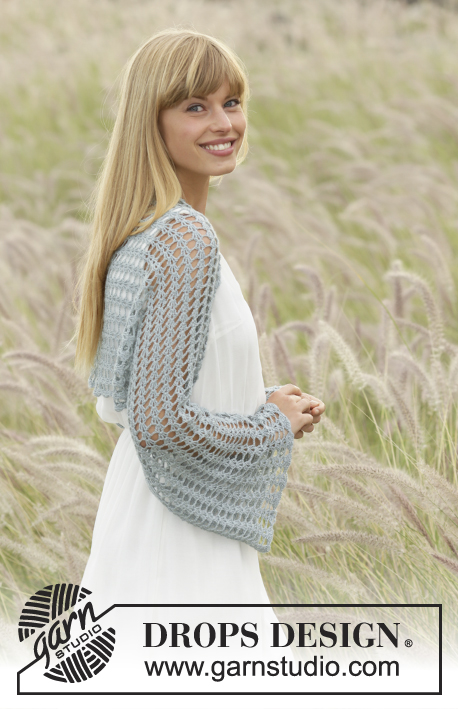 |
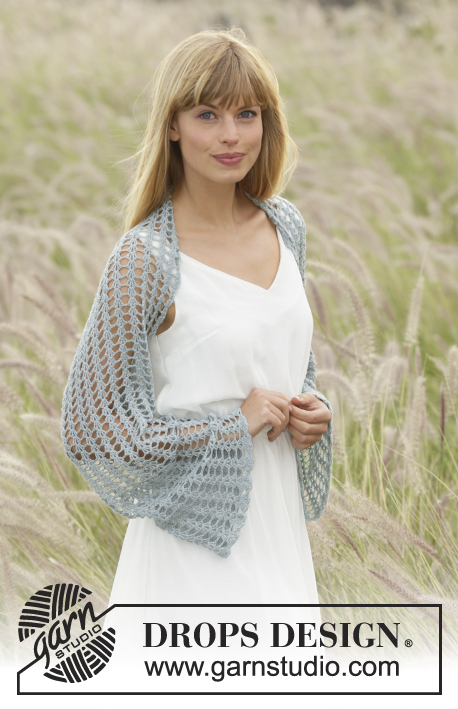 |
||||||||||||||||||
Crochet DROPS shoulder piece with fan pattern in ”Lace”. Size S- XXXL
DROPS Extra 0-1278 |
|||||||||||||||||||
|
PATTERN: See diagrams A.1 to A.6. ---------------------------------------------------------- SHOULDER PIECE: Worked back and forth in two parts. Beg from mid back by working one half of the shoulder piece, then work from beg of this half to make the other half. FIRST HALF: Work 143-151-159-167-175-183 ch on hook size 4 mm with Lace. Turn piece and work back in ch as follows: Beg by working 1 sl st in the 15th ch from hook. Then work along the ch-row as follows: * 7 ch, skip 7 ch and work 1 sl st in next ch *, repeat from *-* the entire row and finish with 1 sl st in last ch on row = 17-18-19-20-21-22 ch-space in a row. Turn piece and work according to diagram A.1 to A.3, i.e. work as follows: ROW 1: Work 4 ch, work 2 dtr around first ch-space, 1 ch and 2 dtr around same ch-space, * 2 ch and skip to next ch-space, work 2 dtr around ch-space, 1 ch, 2 dtr around same ch-space *, repeat from *-* the entire row. Turn piece. ROW 2: Work 4 ch, work 2 dtr around ch in first dtr-group, 1 ch and 2 dtr around same ch, * 2 ch, 2 dtr-around ch in next dtr-group, 1 ch, 2 dtr around same ch *, repeat from *-* the entire row. REMEMBER THE CROCHET TENSION! Continue to work as 2nd row until piece measures 65-66-67-68-69-70 cm. Then work according to diagram A.4 to A.6, i.e. work as follows: ROW 1: Work 4 ch, 4 dtr around ch in first dtr-group, 1 ch and 4 dtr around same ch (= 1 large dtr-group), * 1 ch, 4 dtr-around ch in next dtr-group, 1 ch, 4 dtr around same ch *, repeat from *-* the entire row. Turn piece. ROW 2: Work 6 ch, 1 dc around ch in first dtr-group, 5 ch, * 1 dc around next ch, 5 ch, 1 dc around ch in next dtr-group, 5 ch *, repeat from *-* the entire row and finish with 1 dc in 4th ch at beg of previous row. Fasten off. SECOND HALF: Turn piece and work on the underside of the 17-18-19-20-21-22 ch-spaces from beg of first half. Work the same way as first half but beg on ROW 1. SHAPING: Place the piece in lukewarm water until it is soaking wet. Carefully squeeze out the water - do not twist. Then roll the piece in a towel and squeeze to remove more water - the piece will now only be moist. Place the piece on a carpet or mattress - carefully stretch it out to measurements: 36-38-40-42-44-46 cm in width (before assembly) and 146-148-150-152-154-156 cm in length. Leave to dry. ASSEMBLY: Fold the piece along and sew the underarm seams tog along the dotted lines shown on chart. The garment must be shaped after every wash. |
|||||||||||||||||||
Diagram explanations |
|||||||||||||||||||
|
|||||||||||||||||||
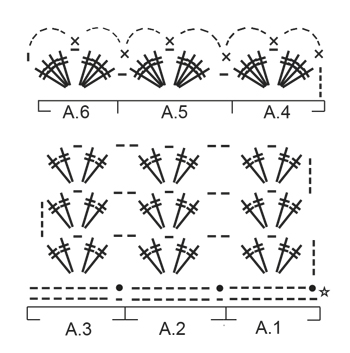 |
|||||||||||||||||||
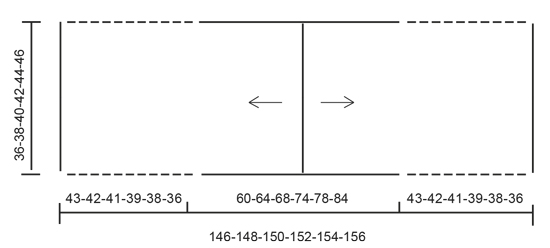 |
|||||||||||||||||||
Have you finished this pattern?Tag your pictures with #dropspattern or submit them to the #dropsfan gallery. Do you need help with this pattern?You'll find 6 tutorial videos, a Comments/Questions area and more by visiting the pattern on garnstudio.com. © 1982-2025 DROPS Design A/S. We reserve all rights. This document, including all its sub-sections, has copyrights. Read more about what you can do with our patterns at the bottom of each pattern on our site. |
|||||||||||||||||||








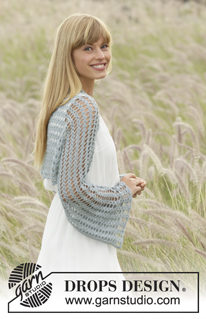
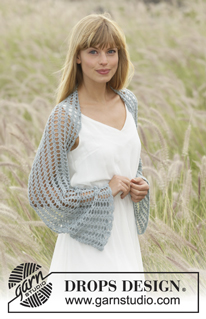
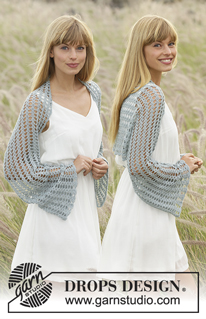



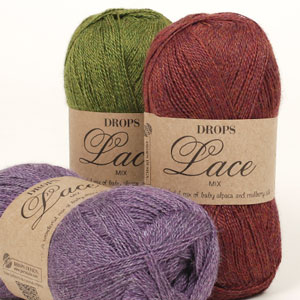



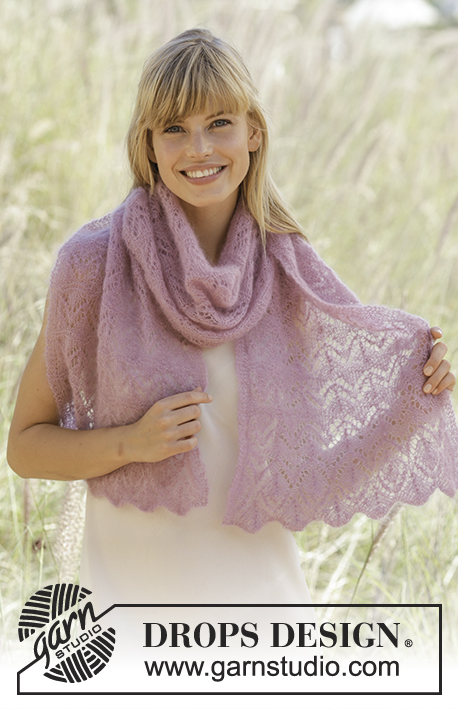














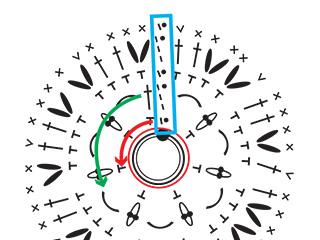



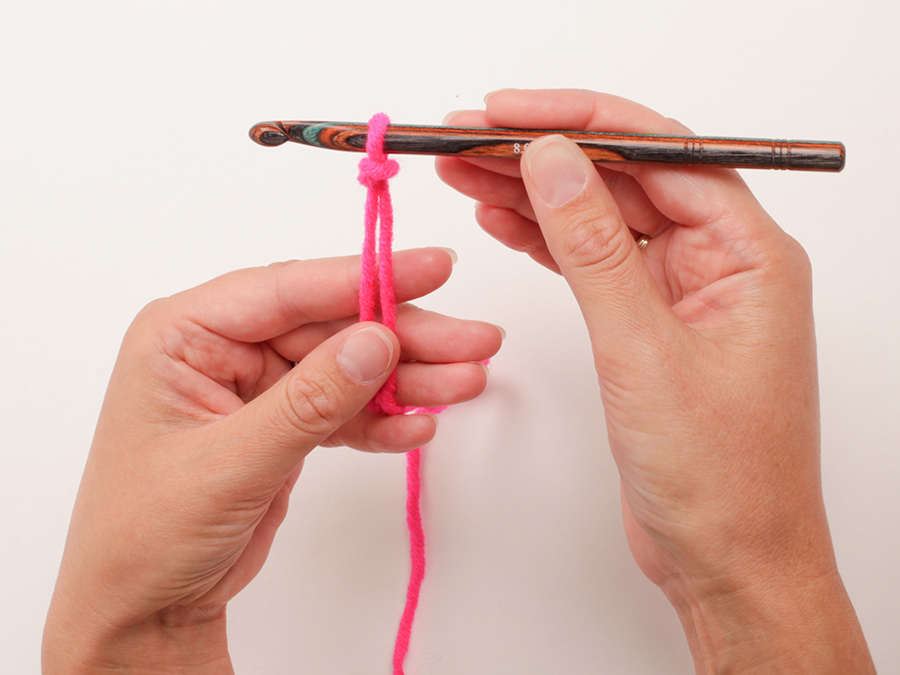
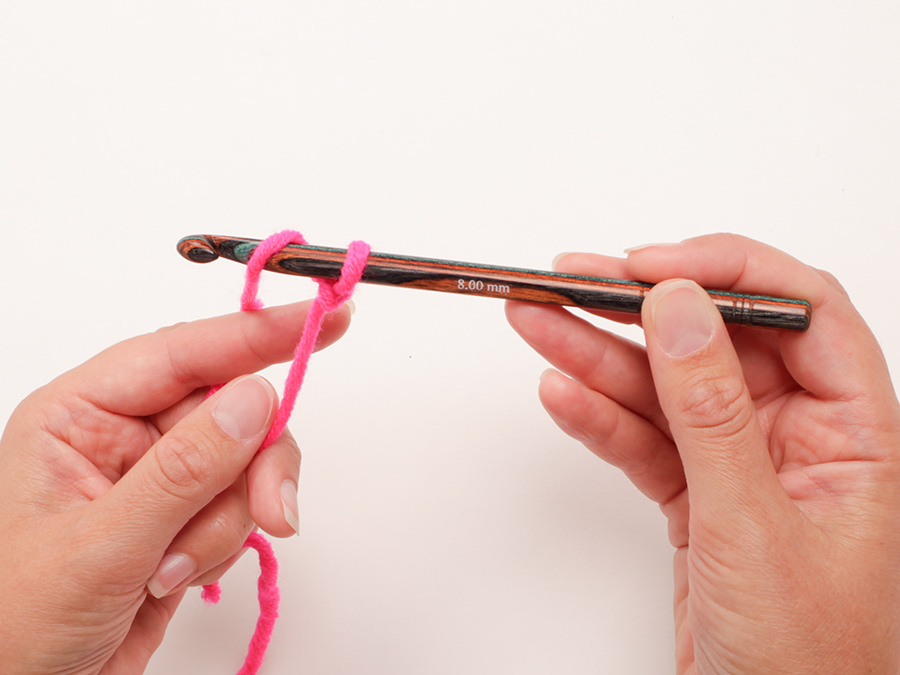
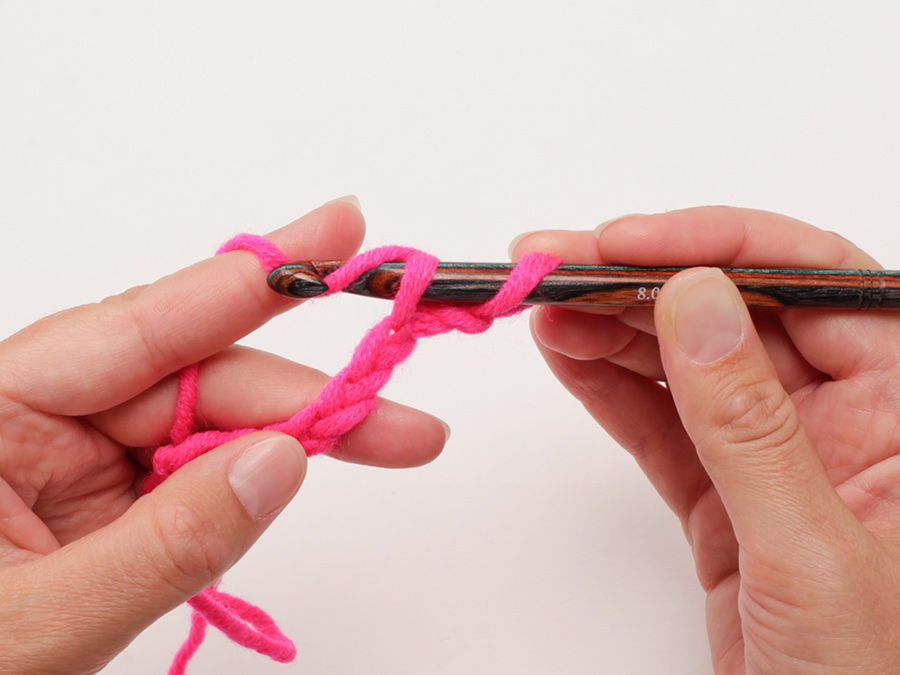
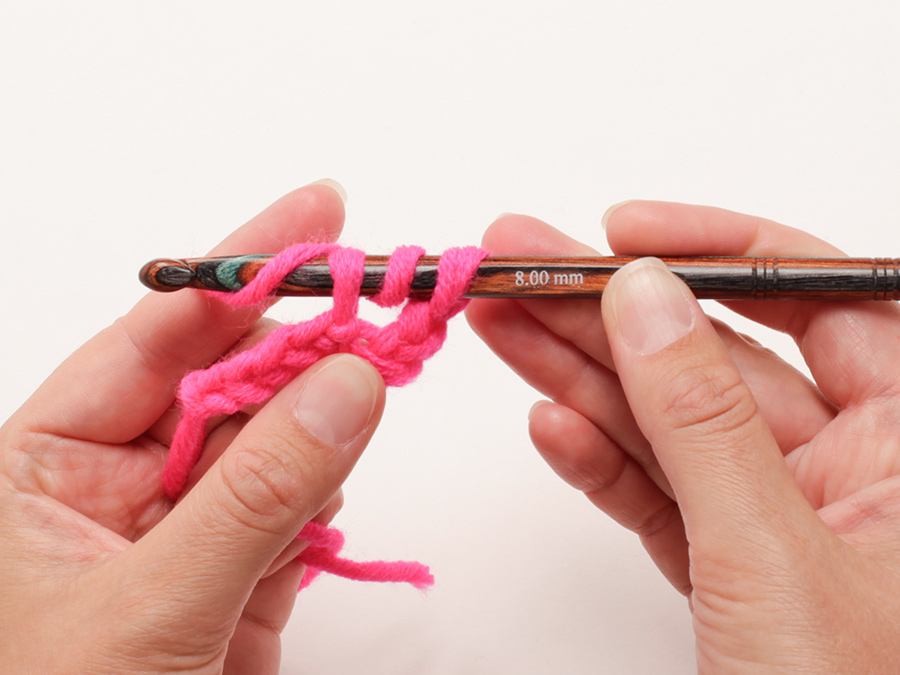
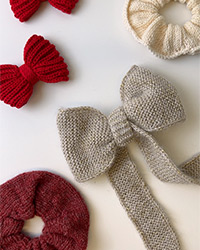
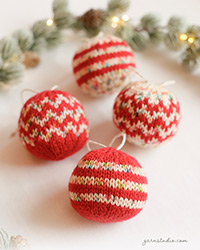
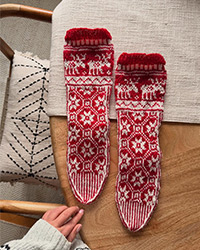


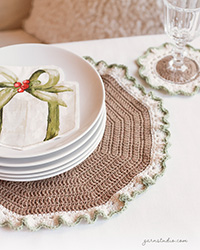
Post a comment to pattern DROPS Extra 0-1278
We would love to hear what you have to say about this pattern!
If you want to leave a question, please make sure you select the correct category in the form below, to speed up the answering process. Required fields are marked *.